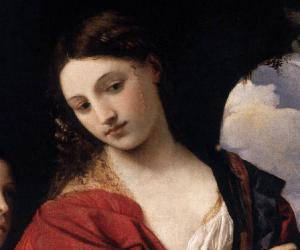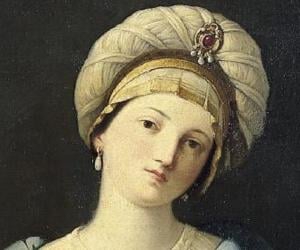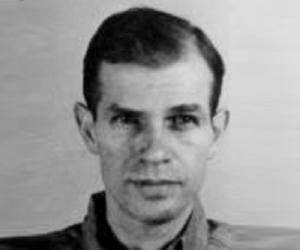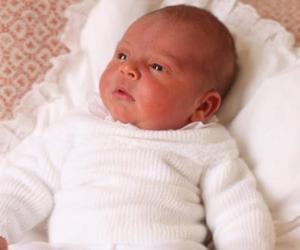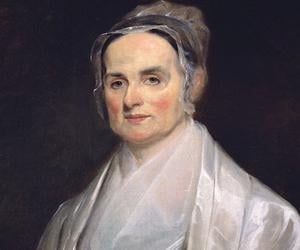Depictions in the First Century Sources
It is generally believed that Salome and the daughter of Herodias who, as per Mark 6:17–29 and Matthew 14:3–11, performed in front of Herod were the same individuals. Josephus, in his ‘Jewish Antiquities’, wrote about Salome, mentioning that she was Herodias’ daughter.
Salome’s father was Herod II, the son of Herod the Great and his third wife, Mariamne II. After Herod the Great executed two of his sons with his second wife Mariamne the Hasmonean, Alexander and Aristobulus IV, in 7 BC, the latter’s daughter, Herodias, was left an orphaned minor.
Herod subsequently decided to get her engaged to Herod II, her half-uncle. Herod’s eldest son, Antipater II, voiced his opposition to this, and as a result, Herod II was moved down to the second place in the line of succession.
In 4 BC, Herod the Great executed Antipater II for his attempts to poison him. This made Herod II his eldest surviving son. However, Mariamne II was aware of Antipater II’s plot, but she was unable to prevent it. This resulted in Herod II’s removal from his father’s will.
A few days later, Herod the Great passed away. By then, Herod II and Herodias were living in Rome as private citizens. This saved them from Herod the Great’s deathbed purges. The kingdom was subsequently divided among Herod Antipas and his other remaining half-brothers.
According to some sources, Salome was born in 1st century AD. In his Gospel, Mark mentions that Salome’s father was Philip. This has prompted some scholars to refer to Herod II as Herod Philip. However, this idea is contradicted by other scholars. They state that the gospel writer had made a mistake, a view backed by the fact that the Gospel of Luke later discarded the name Philip.
At some point after the birth of her daughter, Herodias divorced Herod II. Josephus writes the following on the matter, “Herodias took upon her to confound the laws of our country, and divorced herself from her husband while he was alive, and was married to Herod Antipas”.
Herod Antipas was Herod the Great's son by Malthace. During his visit to Rome, he stayed with Herod II. Antipas and Herodias fell in love, and they divorced their respective spouses. Some sources deduce that Antipas and Herodias got married in about the year 34 AD.
Salome’s first husband was Philip the Tetrarch, who was also one of her half-uncles. After his death, she tied the knot with Aristobulus of Chalcis, one of her cousins and the son of Herod of Chalcis and his first wife Mariamne.
Salome and Aristobulus had three children together: Herod, Agrippa, and Aristobulus. Three coins have been discovered with their images on them.
In the Gospels of Mark and Matthew, a daughter of Herodias performs a dance for Antipas at his birthday celebration. Her dance makes the king and the people dining with him happy. Antipas subsequently tells the girl that he will give her anything she asks for, even if it is half of his kingdom. Herodias suggests to her daughter to ask for John the Baptist’s head on a platter from the king.
An extremely important religious figure in Christianity, Islam, the Bahá'í Faith, and Mandaeism, John the Baptist was the one who baptised Jesus of Nazareth. John criticised the king’s marriage to Herodias, dubbing it to be against the Jewish law.
According to Josephus, John had become a significantly influential figure among the public, and this had made Antipas fearful of him. He eventually ordered John’s arrest and kept him imprisoned in Machaerus.
Salome did what she was told and demanded John’s head on a platter. Both Mark and Matthew claim that the request greatly saddened the king, but he granted it nonetheless.
Some Greek translations of the Gospel of Mark have led many scholars, especially in early modern Europe, to mistakenly presume that Herodias and her daughter had the same name. The passage is correctly translated in the Latin Vulgate Bible. In their sermons, the western church preachers spoke of her as "Herodias' daughter" or just "the girl."
Herodias’ daughter was likely not the same person as Salome the Disciple. According to Mark 15:40, she was one of the few people who observed Jesus’ crucifixion.
However, in the apocryphal ‘Book of the Resurrection of Christ’, which is believed to have been written by Bartholomew the Apostle, a “Salome the temptress” makes an appearance among the women visiting the empty tomb. It is possible that this echoes an early tradition that Salome, the daughter of Herodias, went to the tomb.
Continue Reading Below
Artistic Depictions of Salome
The Biblical tale of her dance for the head of John the Baptist on a silver platter had resulted in various medieval artists portraying her as the embodiment of the lascivious woman, a temptress who entices men away from deliverance.
Christian traditions generally view her as the epitome of dangerous female seductiveness, acknowledging the erotic elements of her dance. The performance was further iconized as the Dance of the Seven Veils after it was referred to as such in the stage direction of the 1893 English translation of Oscar Wilde's 1891 French play ‘Salome’.
Throughout the years, her story has inspired artists like Masolino da Panicale, Filippo Lippi, Benozzo Gozzoli, Leonardo da Vinci followers Andrea Solario and Bernardino Luini, Lucas Cranach the Elder, Titian, Caravaggio, Guido Reni, Fabritius, Henri Regnault, Georges Rochegrosse, Gustave Moreau, Lovis Corinth, and Federico Beltran-Masses.
Salome is a character in Alessandro Stradella's oratorio ‘S. Giovanni Battista’ (1676). She also appears as a character in Gustave Flaubert's ‘Three Tales’ (1877) and Robert E. Howard’s ‘A Witch Shall Be Born’ (1934).
In Carl Jung’s ‘The Red Book’ (2009), she is the embodiment of the Swiss psychiatrist’s pleasure. Wilde’s play inspired a one-act opera of the same name (1905) by Richard Strauss. Antoine Mariotte composed another one-act opera to a libretto inspired by Wilde’s play.
Wilde’s play has also been turned into several films, including the 1923 silent film, ‘Salome’ and ‘Salome's Last Dance’ (1988). In the latter project, Wilde is featured as a character.
The Biblical tale has also been adopted in films like the 1918 American silent film ‘Salomé’, the 1986 French-Italian film ‘Salome’, and Al Pacino’s 2011 directorial venture ‘Wilde Salome’, a documentary drama that explores Wilde’s play.
Facts About Salome
Salome was known for her exceptional beauty and charisma, which captivated many who encountered her.
She was a skilled dancer and performer, known for her graceful and mesmerizing movements.
Salome was also recognized for her intelligence and wit, often engaging in thought-provoking conversations with those around her.
Despite her reputation for being bold and confident, Salome was also known to have a compassionate and caring side, especially towards those in need.
In addition to her talents and charm, Salome had a keen eye for fashion and was often seen wearing intricate and stylish outfits that reflected her unique sense of style.
